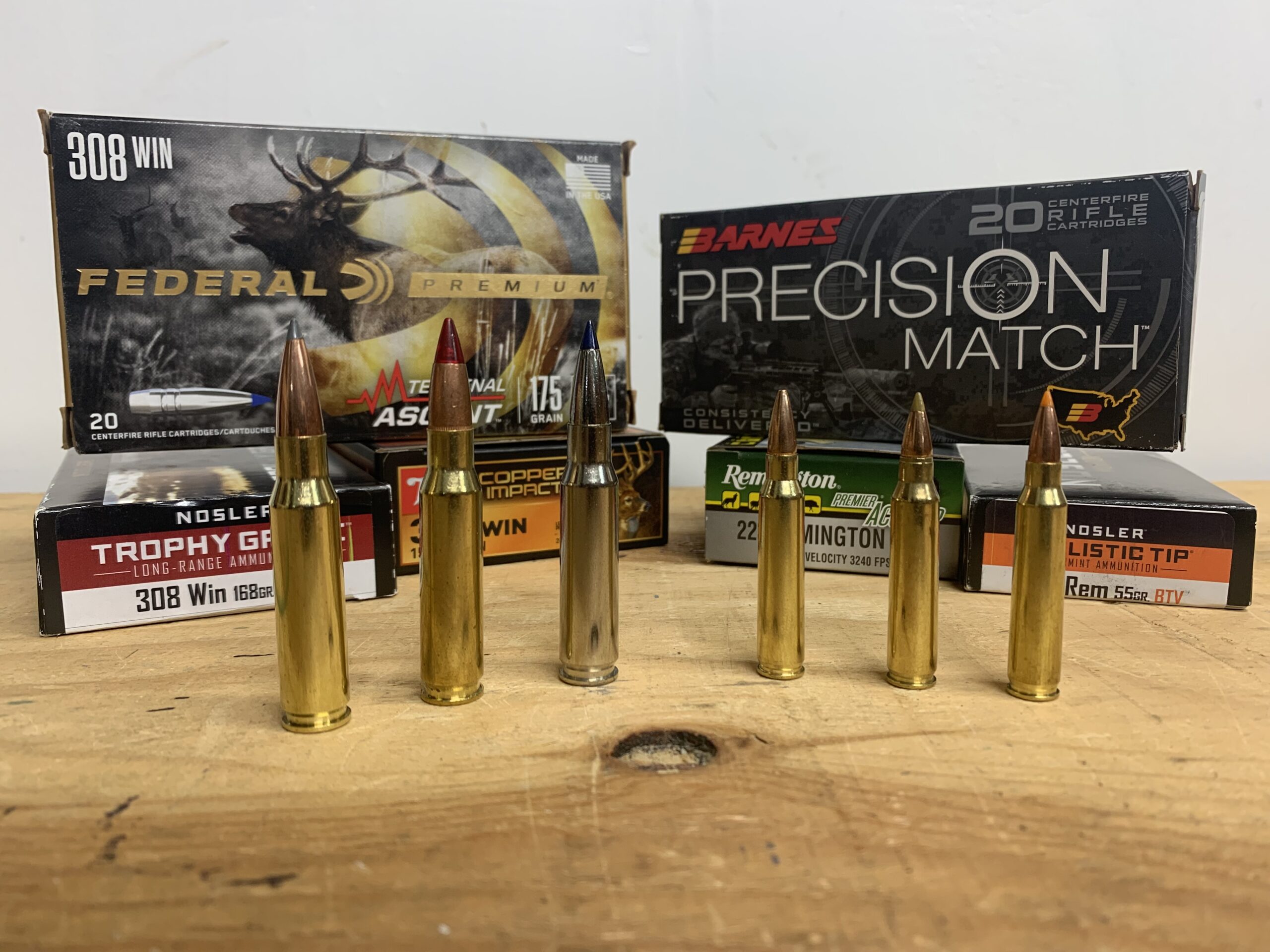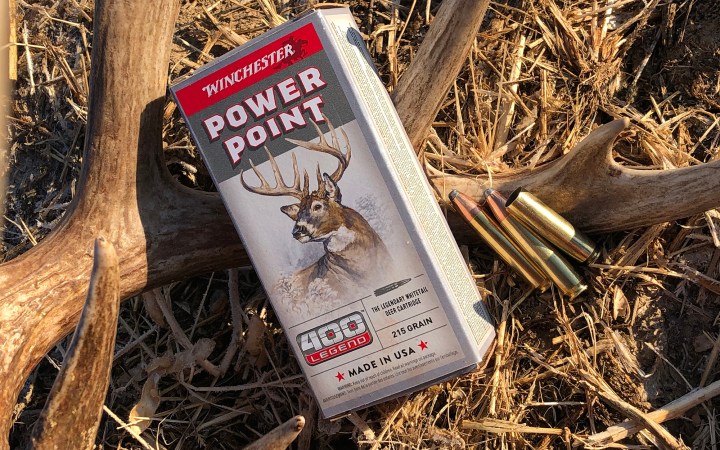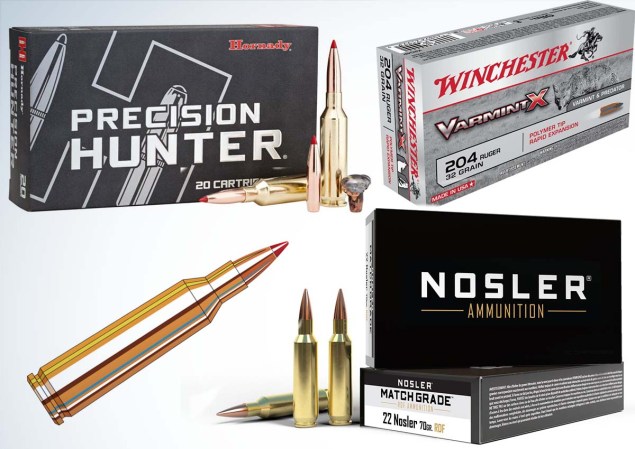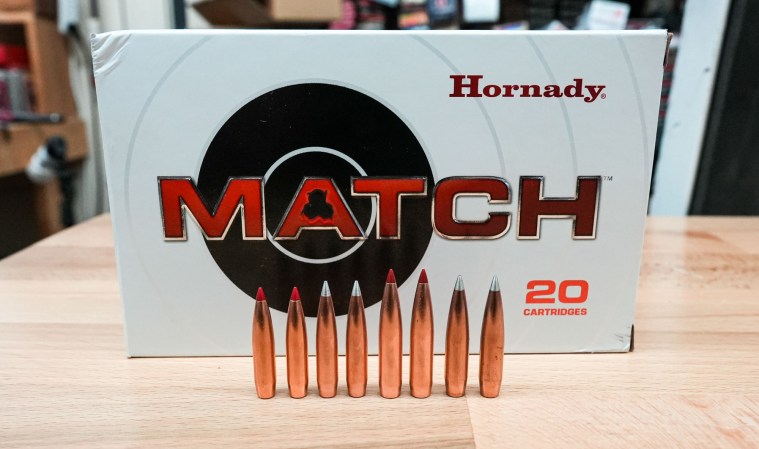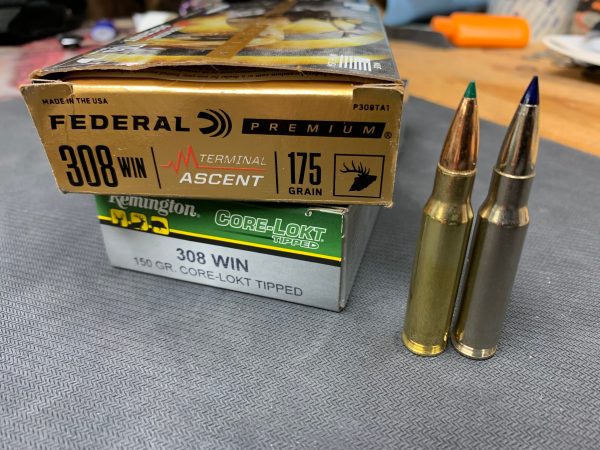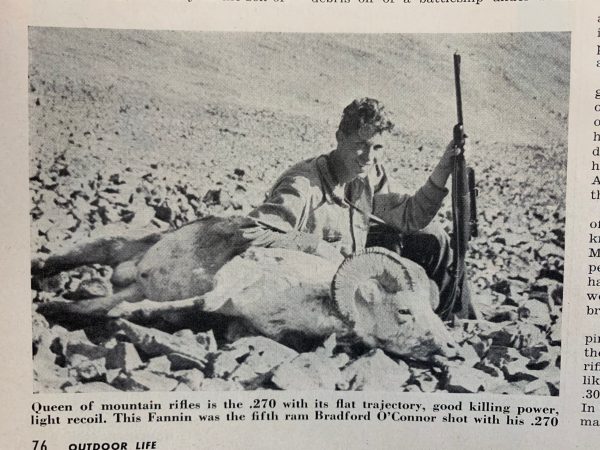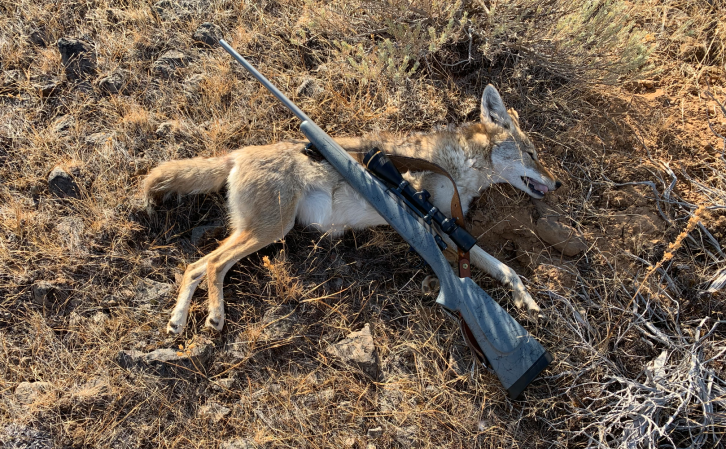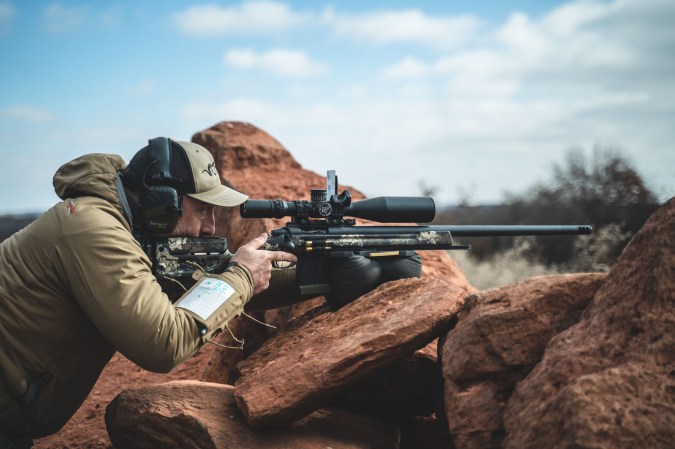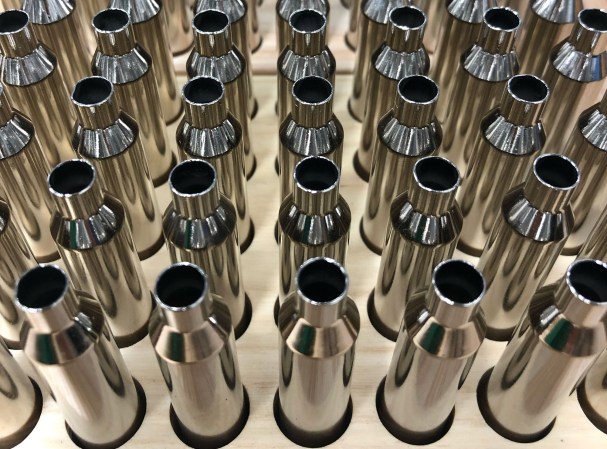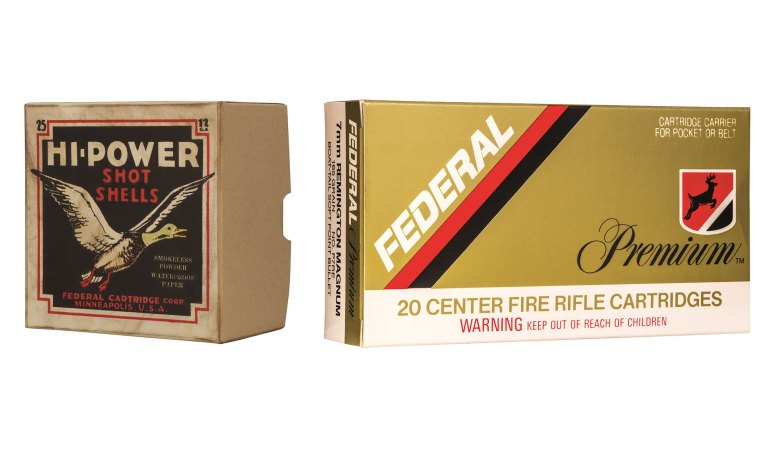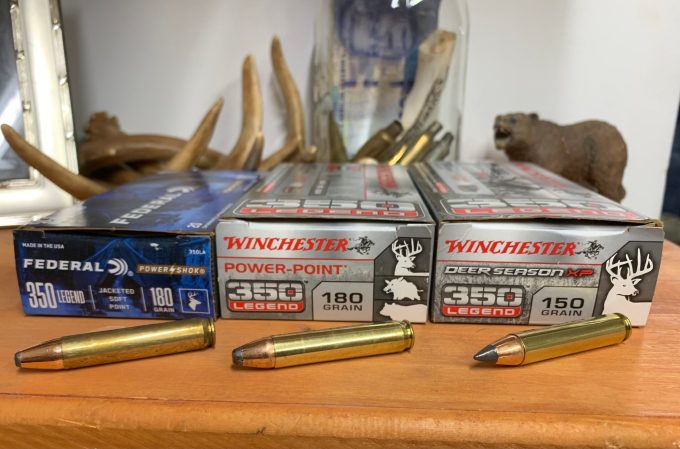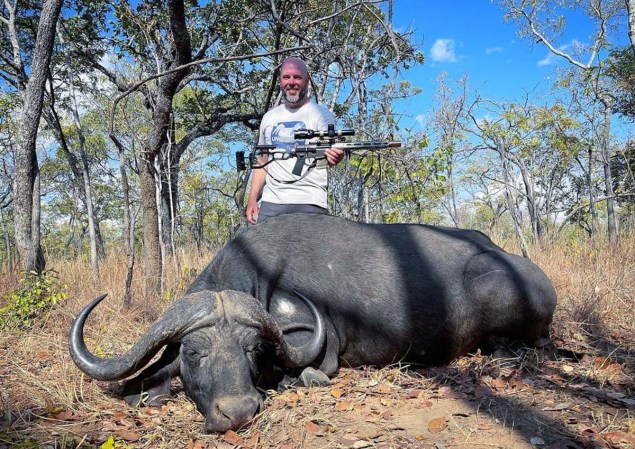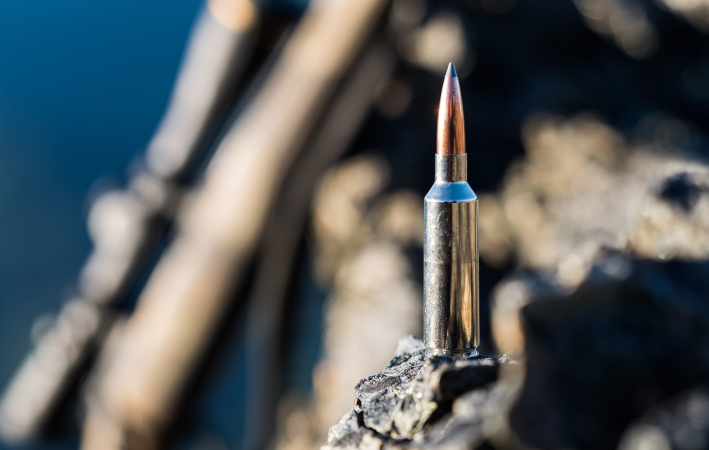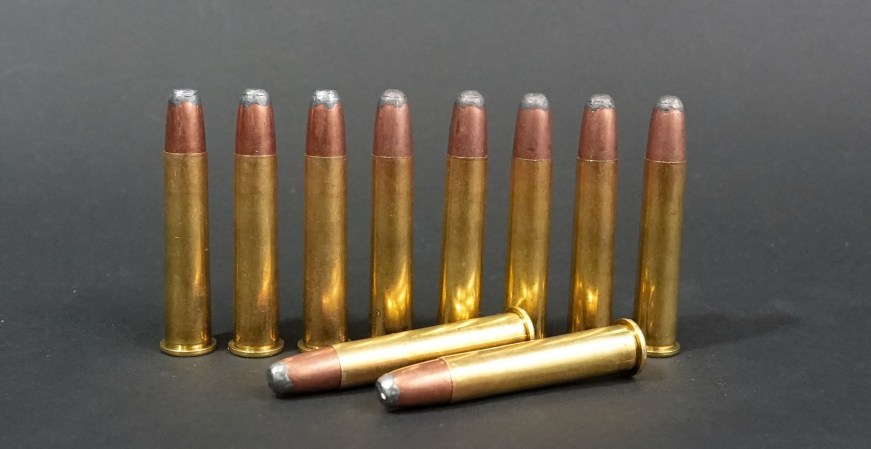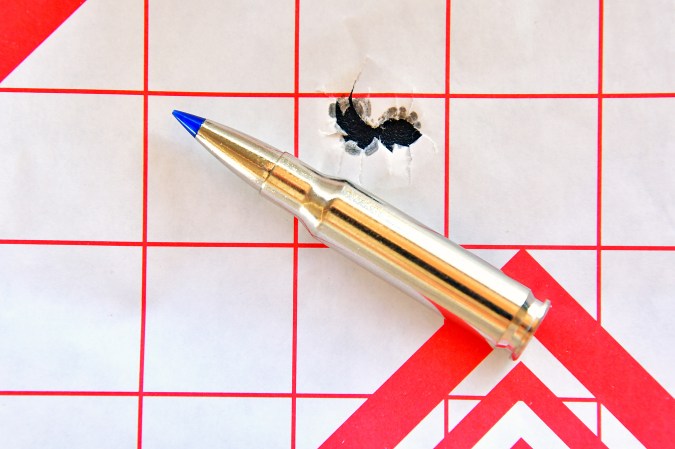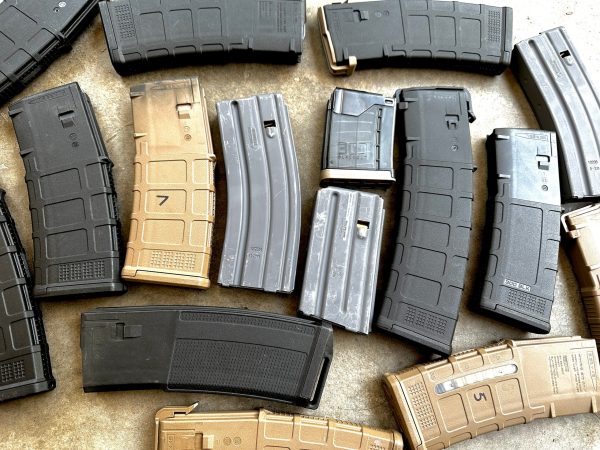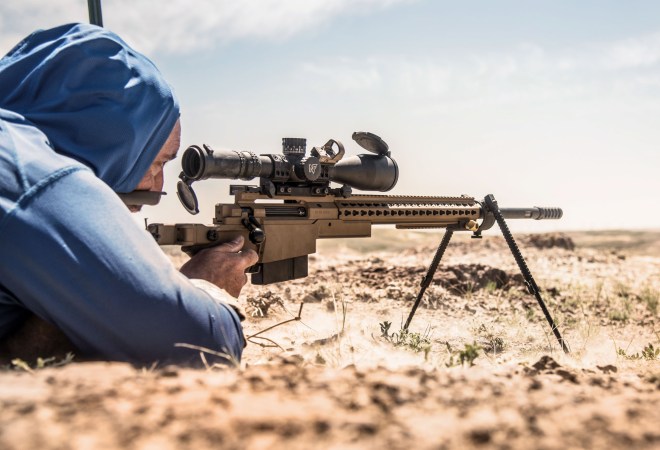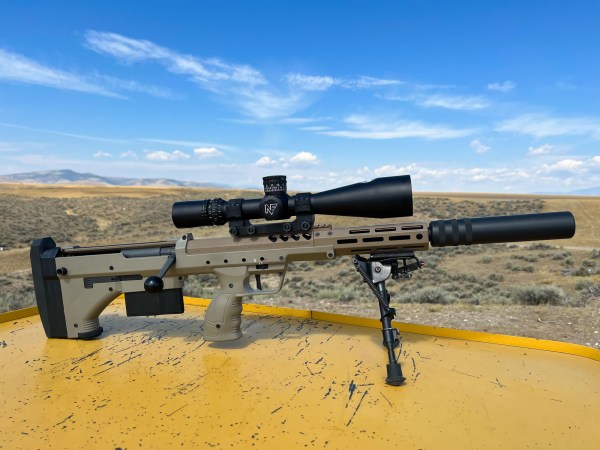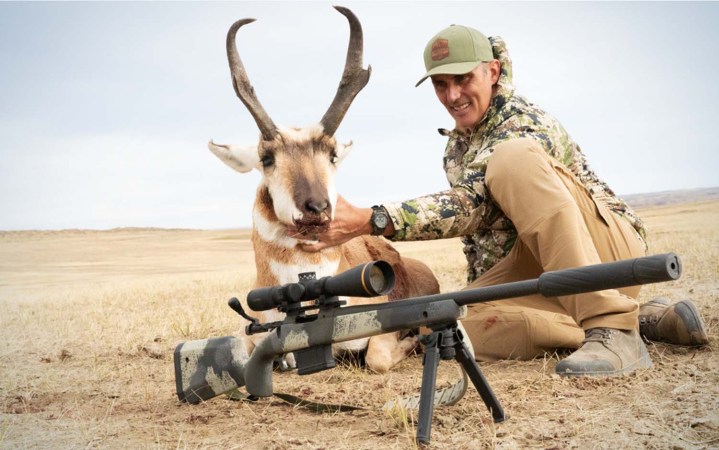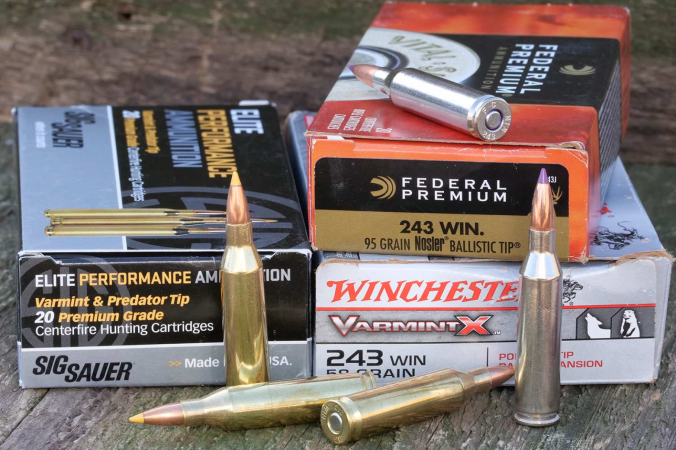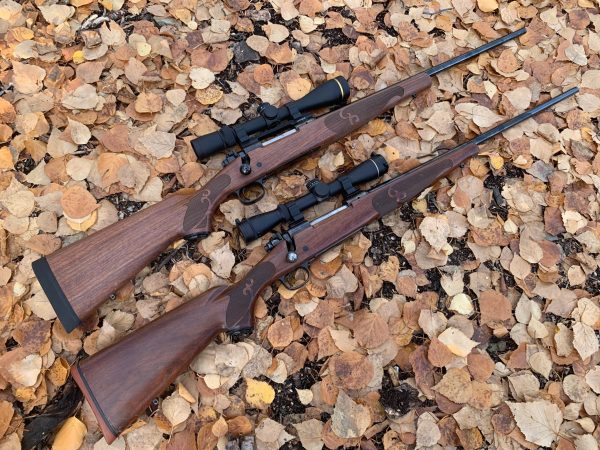We may earn revenue from the products available on this page and participate in affiliate programs. Learn More ›
Both the .308 Winchester and 5.56 NATO cartridges have colorful histories and are among the most popular centerfire cartridges of all-time. Yet, despite the comparisons between the two, they have little in common in terms of performance and were designed to perform different duties. Then why compare the .308 vs 5.56?
Mostly because the pair of iconic cartridges share two noteworthy similarities that tie them together. The .308 Win. (or its military equivalent the 7.62×51) and 5.56 NATO are both battle-proven cartridges that have been used by multiple branches of the military for decades. Second, both of these cartridges paved the way in the early development of their respective AR platforms that are amongst the most popular rifle configurations today.
If you’re digging into comparisons of these two cartridges, it’s likely because you’re trying to decide between an AR-10 in .308 vs an AR-15 in 5.56. Put simply, the .308 Win. excels at engaging long-range targets and gives shooters a much greater variety of bullet weight options, while the 5.56 NATO is often chambered in platforms that are easier to maneuver, produce less recoil, and are more practical at close ranges. Let’s get into the details.
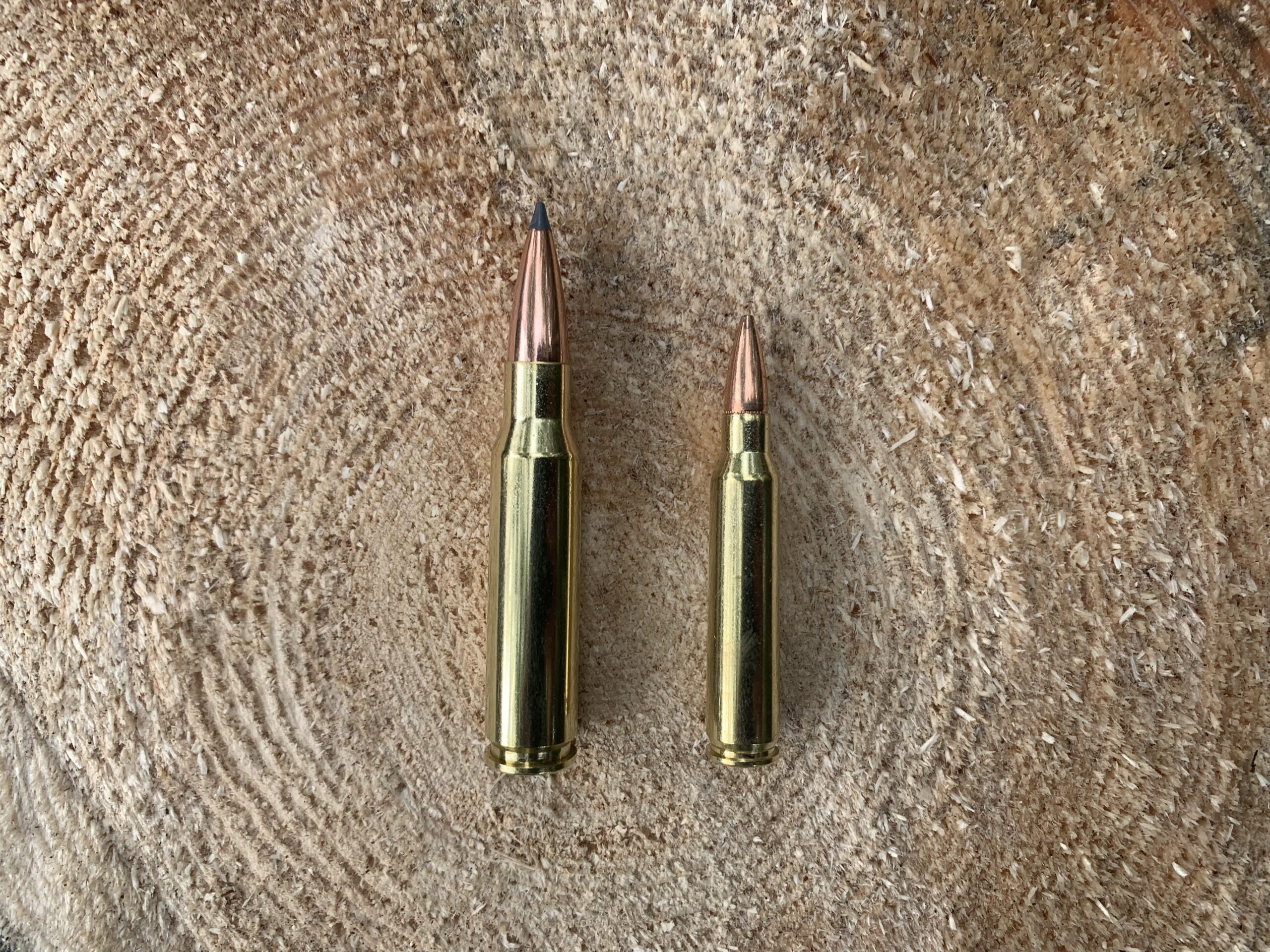
.308 Winchester Specs
- Bullet Diameter: .308 inches
- Case Length: 2.015 inches
- Overall Length: 2.8 inches
- Parent Case: .300 Savage
5.56 NATO Specs
- Bullet Diameter: .224 inches
- Case Length: 1.76 inches
- Overall Length: 2.26 inches
- Parent Case: 223 Remington
History
.308 Winchester
The M1 Garand, chambered in .30/06 Springfield, gallantly served the US Armed Forces through World War II as well as the Korean War. Shortly after, the 7.62×51 NATO cartridge was developed and officially adopted as a NATO cartridge in 1954, offering nearly similar ballistics to the beloved .30/06 Springfield in a short action cartridge. Simultaneously, Winchester launched the .308 Winchester cartridge in 1952, a nearly identical cartridge to the 7.62×51 NATO with two slight differences and the intent for civilian use.
The .308 Win. differentiates itself from the 7.62×51 NATO by shooting ammunition loaded to a higher pressure. SAAMI approved max pressure for the .308 Win is 62,000 PSI, while NATO EPVAT approved max pressure for the 7.62×51 NATO is listed at 60,000 PSI. Due to the higher pressure, the wall thickness of .308 Win. brass is slightly thinner than the 7.62×51 NATO to accommodate the additional pressure.
Since its inception, the .308 Win. has risen through the ranks as one of the most popular cartridges of all-time, appeasing gun enthusiasts from all genres of the shooting sports. The .308 Win. also has been adopted into a wide array of rifle configurations from bolt-action to the popular AR-10s.
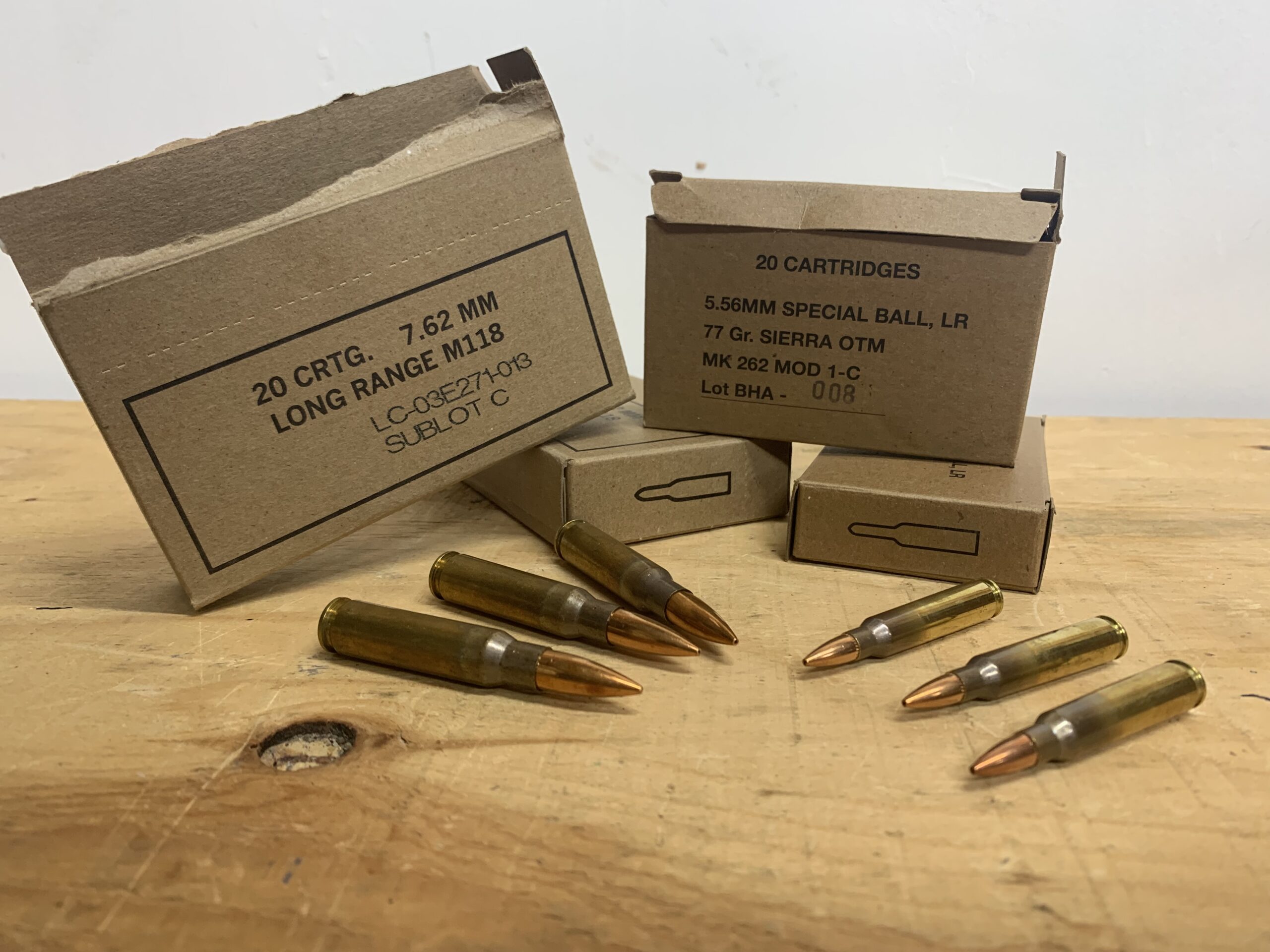
5.56 NATO
The story of the 5.56 NATO cartridge is similar in nature to the 7.62×51 NATO and was derived from the development of the .223 Remington. Or as the military referred to it as, the 5.56×45. The U.S. Military adopted the 5.56×45 cartridge, along with Armalite’s M16 rifle in 1963, laying the groundwork for the most popular sporting rifle design of our time, the AR-15. Remington launched the .223 Rem. to civilians the following year.
However, it was not until 1977 that NATO accepted the 5.56×45 cartridge with slight variations. NATO bumped the chamber pressure in the 5.56 NATO to 61,000 PSI while the SAAMI approved chamber pressure for the .223 Rem. remained at 55,000 PSI. Physical cartridge dimensions for the 223 Rem. and 5.56 NATO are nearly identical. In light of this, everyone agrees there’s no issue shooting .223 Rem. ammo in rifles marked for 5.56 NATO. However, the traditional take is that because the .223 is loaded to lower pressures that 5.56 NATO ammo shouldn’t be used in barrels stamped .223 Remington.
OL staffer Tyler Freel has found that this traditional perspective is bunk. “If you’re trying a new 5.56mm NATO load in your .223 chamber, check for pressure signs, sure, but in a modern rifle, you’re not likely to encounter any issues,” Freel writes. “I’ve fired a tremendous amount of military M855 ball and other 5.56mm NATO through regular old .223 chambers without so much as a flattened primer—including in this test.”
The 5.56 NATO cartridge has proven its worth as a capable cartridge fit for lightweight rifle platforms.
Ballistics
Comparing ballistic performance between the .308 Win. and 5.56 NATO is not fair to either cartridge given the drastic difference in bullet diameter (.308 vs. .224) and available bullet weights. To illustrate this, I selected a heavy-for-caliber hunting load from both cartridges.
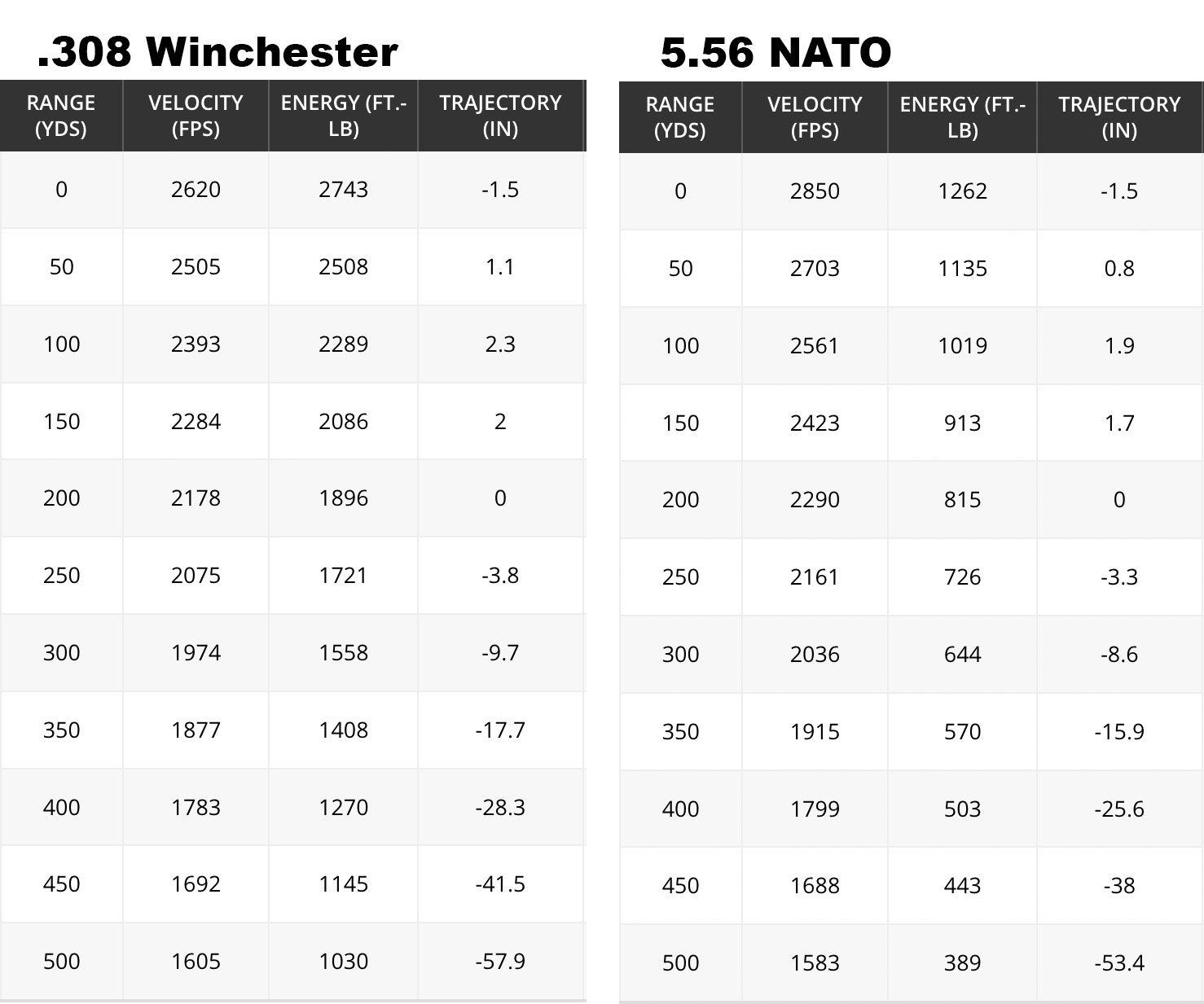
.308 Win. Remington Core-Lokt 180-grain
- Muzzle Velocity: 2,620 fps
- Energy @300 yds: 1,558 ft-lb
- Drop @ 300 yds: 9.7 inches (with a 200-yard zero)
5.56 NATO Barnes VOR-TX 70-grain
- Muzzle Velocity: 2,850 fps
- Energy @300 yds: 656 ft-lb
- Drop @300 yds: 8.6 inches (with a 200-yard zero)
It is easy to see the difference in the two cartridges and their ability to deliver downrange energy. This is simply due to the .308 Win.’s ability to shoot much heavier projectiles. It is also worth noting that despite the difference in muzzle velocity and bullet weight that the bullet drop between the two remains negligible with these two loads, both displaying 51 inches of drop at 500 yards.
The diminished energy of the 5.56 NATO at 300 yards points to one of the cartridge’s limitations. It is a great cartridge for close range, personal defense as well as hunting in close quarters. But at longer ranges, the 5.56 NATO is not a viable hunting cartridge for anything bigger than a coyote. By the numbers, and personal accounts of numerous hunters each fall, the .308 Win. can effectively take down big critters like moose and elk to 300 yards and beyond depending on bullet selection.
Recoil
Where the 5.56 NATO really shines over the .308 Win. is in terms of felt recoil. But this doesn’t come as any surprise given the drastic difference in bullet weights and powder charges between the two cartridges. Felt recoil when firing a 5.56 NATO is more like a slight push than a sharp jab, with recoil averaging between 5 and 6 foot-pounds. This allows shooters to spot impacts as well as quickly re-engage their intended target.
In contrast, the .308 Win. on average produces around 20 ft-lbs. of recoil, nearly tripling that of the 5.56 NATO. Still, even with 20 ft-lbs. of recoil, the .308 Win. is a mild recoiling cartridge when compared to other .30 caliber cartridges. The use of a muzzle brake or suppressor will drastically dampen the felt recoil of the .308 Win. to very manageable levels.
Accuracy
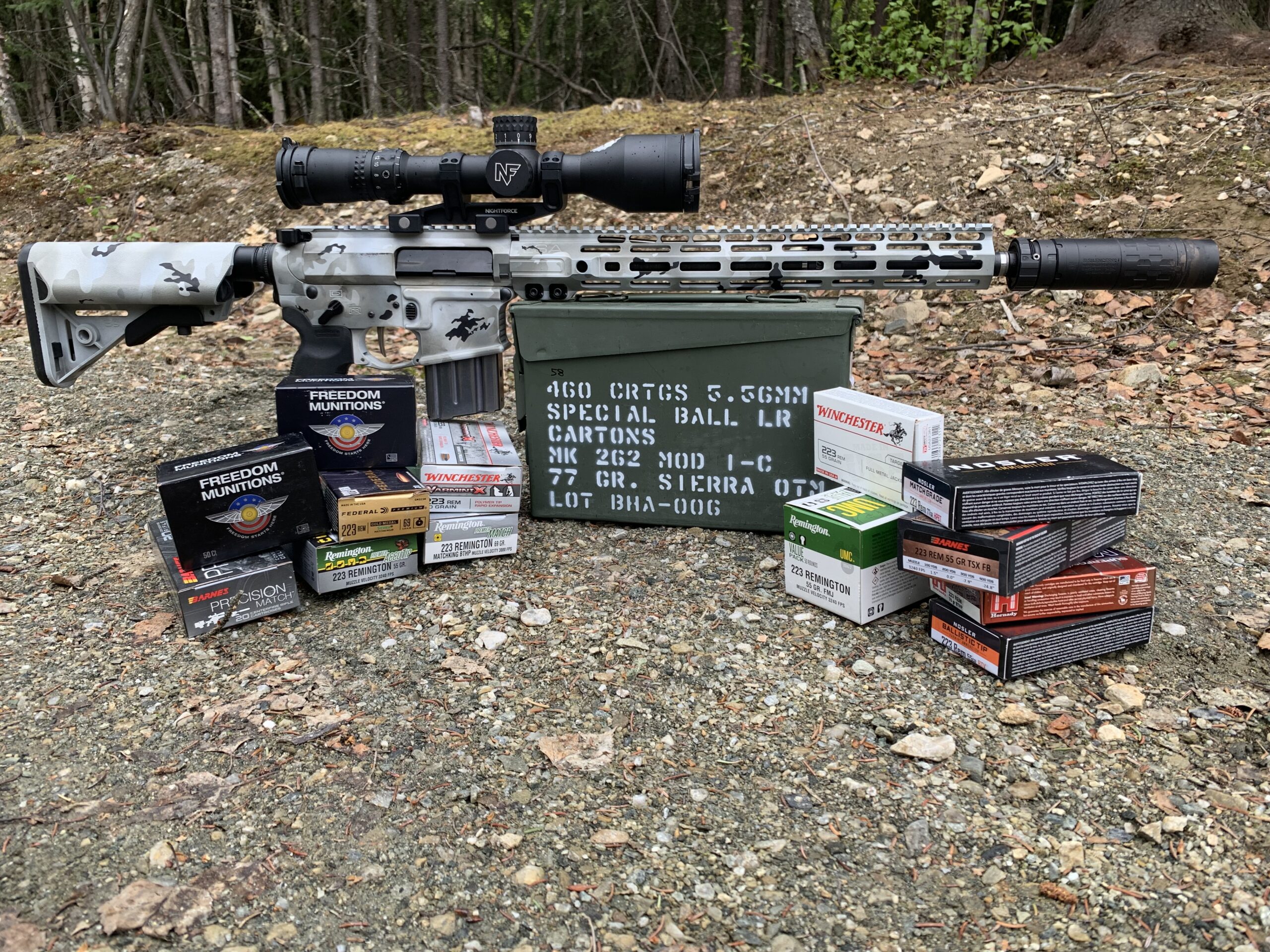
Both the .308 and 5.56 NATO/.223 Rem. cartridges have great accuracy potential, and both will generally shoot well in factory rifles. In recent testing, Freel has found that for factory ammo through factory rifles, the 5.56 Nato and .223 are generally more accurate than the .308. With a variety of rifles and ammunition, Freel has recorded 258 5-shot groups that averaged 1.923 inches for .308 and 573 5-shot groups that averaged 1.206 inches for .223.
READ NEXT: Best .308 Rifles
Good varmint ammunition is accurate and effective beyond 300 yards, and modern match bullets have made it deadly accurate to 600 yards and beyond. In fact, it’s been decades since the .223 and 5.56 NATO toppled the .308 as the king of service rifle competition. At 600 yards and beyond, most shooters use slippery 80- and 90-grain VLD-type bullets, but from a 16-inch carbine firing magazine-length Barnes 85-grain OTM ammo, Freel was able to run a 10-shot string into the 6-inch X-ring at the 600-yard-line before a wind switch cooled the hot streak—and wind is the 5.56 NATO’s weakness at longer distances.
Terminal Performance
The .308 Win. and 5.56 NATO are not intended for the same purpose. Due to its lighter bullets, the 5.56 NATO cartridge is ideal for taking down varmints and deer-sized game. Coyote hunters especially gravitate to the 5.56 NATO for its ability to rapidly send multiple shots down range as well as its ability to not damage the fur to unreasonable levels. It is also common for the 5.56 NATO to be used in the whitetail woods where shots are close and hunters are conscious of felt recoil. In fact, shooting editor John B. Snow even picked it as one of the best deer hunting cartridges.
Since its introduction in the early ’50s, the .308 has built a solid reputation as an extremely capable hunting cartridge for everything from thin-skinned pronghorn on up to massive bull elk and even moose. Though, I would not recommend the .308 Win. to take down massive bruins, given the correct bullet selection and shot placement, it is certainly capable.
Ammunition Availability and Selection
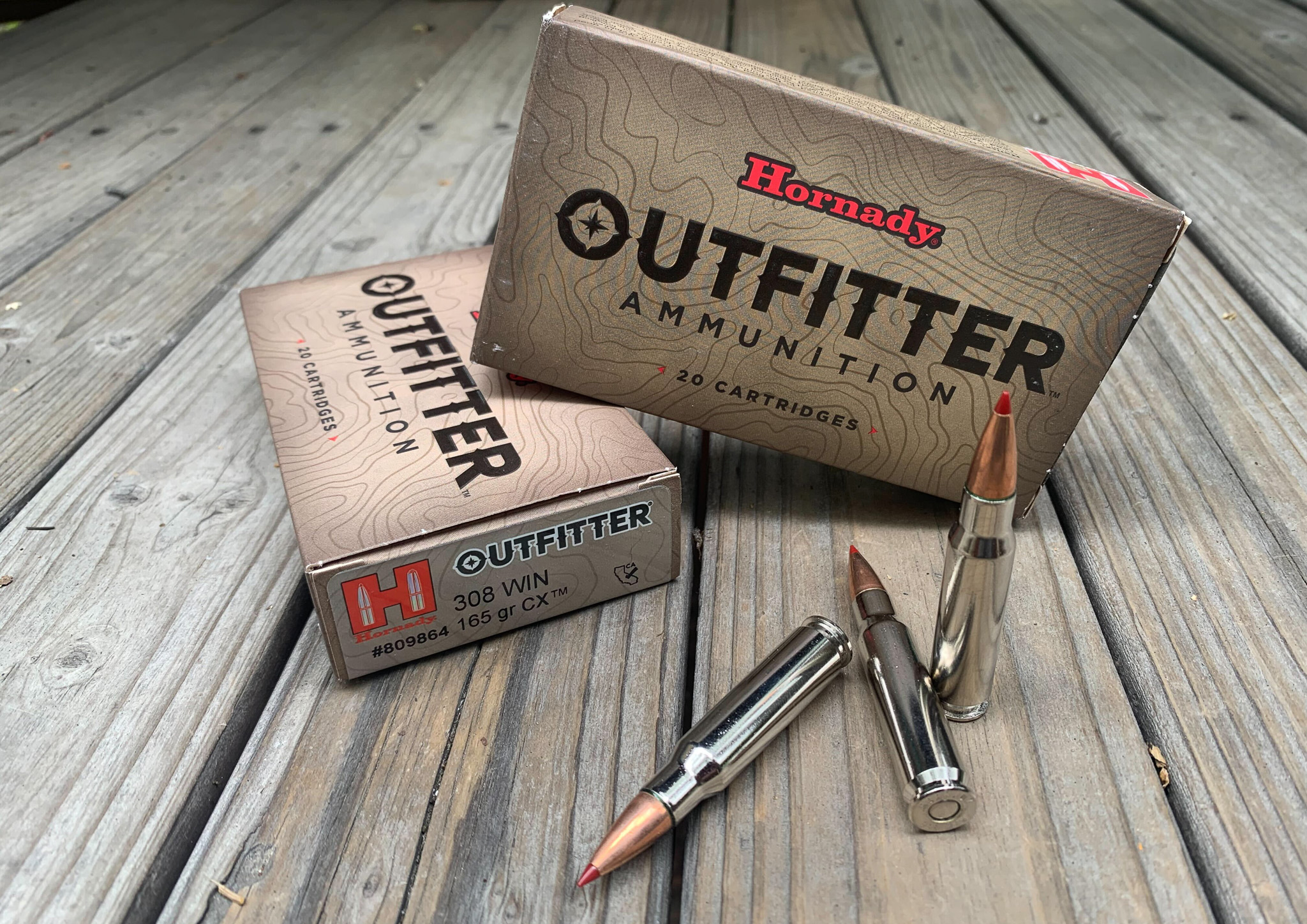
The availability and selection of both the .308 Win. and 5.56 NATO ammunition is greater than just about any other cartridge on the market. Even through the ammo shortage the past few years, ammunition for both of these cartridges has been relatively easy to obtain. With the recent uptick in the ammunition on the shelves at our local gun shops, the amount and variety of .308 Win. and 5.56 NATO ammunition continues to increase.
READ NEXT: Best .308 Hunting Ammo
Common factory .308 Win. hunting ammunition can be purchased with bullet weights ranging anywhere from 110-grains to 185-grains. Several heavier bullet options are available, but they are meant primarily for target shooting. Popular ammunition for the 5.56 NATO feature bullet weights ranging from 50- to- 70-grains. With both cartridges appealing to a wide range of shooting enthusiasts, the variety of bullet weight and configurations available is impressive.
READ NEXT: Best 5.56 Ammo
The cost for a box of .308 Win. ammunition varies drastically between $25 and $70 per box with the average price hovering between $35 and $40. This is another category where the .556 NATO gains an advantage as ammunition cost is typically much cheaper. The average cost of a box of 5.56 NATO ammunition runs between $15 and $20. Another thing to keep in mind is that it is not uncommon to purchase 5.56 NATO ammunition in bulk. Not only does this give you more ammunition but it also typically drives down the average cost per shell. There are some instances where you can buy bulk .308 Win. ammunition, but those opportunities are not nearly as numerous as with 5.56 NATO ammunition.
AR-10 vs AR-15
The AR-15, chambered in 5.56 NATO or .223 Rem. is the most popular sporting rifle design today. What many don’t realize is that the AR-10 originally chambered in 7.62×51 was developed first. While not part of the cartridge comparison, understanding the differences between the AR-10 and AR-15 is a critical component to understanding the pros and cons of both the 5.56 NATO and .308 Win.
Without diving into the nitty gritty of the two platforms, the AR-10, commonly chambered in .308 Win., is notoriously heavy. This spurred the development of the 5.56×45 cartridge and the AR-15/M16 rifles, to make a military-grade weapon that was much lighter and nimble for close range combat. Both cartridges have diligently served multiple branches of the military and offer two very different advantages. The AR-10 (.308 Win.) offers long-range precision at the cost of additional weight while the AR-15 (5.56 NATO) offers a lightweight alternative with substantially less recoil but has a shorter effective range than the AR-10.
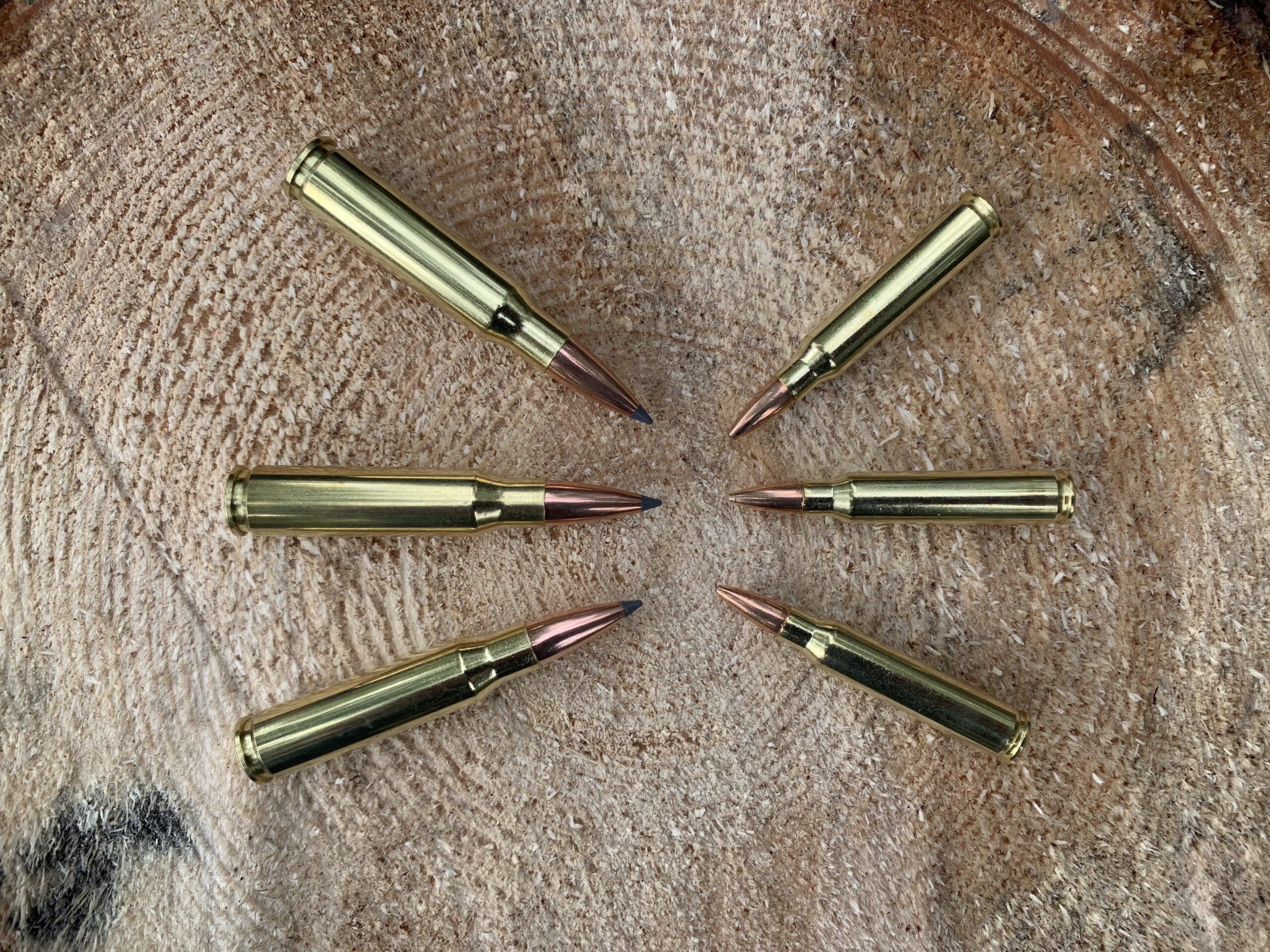
.308 vs 5.56 Q&A
Which one is better for target shooting?
This depends on the type of target shooting you want do do, but in many cases 5.56 has an advantage. If you’re shooting targets at ranges of 600 yards and under, 5.56 is just as accurate, cheaper, and more shooter-friendly. If you want to focus at ranges beyond 600 yards, go with the .308 or one of the other best long range calibers.
Which one is cheaper?
If you’re looking for cheap ammo, go with the 5.56.
Which has more bullet drop?
With a much heavier bullet, the .308 has more bullet drop (as you can see in the chart above) but it also delivers far more energy downrange.
Final Thoughts on .308 vs 5.56
Both cartridges come with a bag of pros and cons. The .308 Win. is one of the most popular hunting cartridges in history with the ability to deliver adequate knock-down power to take most animals in North America. Ammunition is also readily available in a wide range of bullet weights and configurations but is nearly twice the price of 5.56 NATO ammunition. If you intend to primarily shoot at the range or use a rifle for home defense, the 5.56 NATO would be a more suitable option due to the cheaper ammunition, lack of recoil, and ability to easily maneuver with the rifle.
Picking the .308 vs 5.55 hinges on a shooter’s intended use for their rifle. If you are hunting big game with it, there is no doubt in my mind the .308 Win. is the way to go. However, if you are looking for a fun gun to plink with at the range, hunt predators with, and use for home-defense, you will have a hard time beating the 5.56 NATO.
